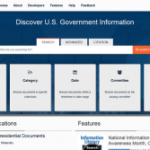This is a choose-your-own-adventure mystery for deducing how five bills were killed in the legislative process. Assist Henry the intrepid Senate Page in this hard-boiled whodunit!
Starter Kit: Legislative Branch Podcast
There are 535 people who meet in the hallowed halls of Capitol Hill. They go in, legislation comes out. You can watch the machinations of the House and Senate chambers on C-SPAN, you can read their bills online. But what are the rules of engagement? Where does your Senator go every day, and what do they do? What does it mean to represent the American people?
This short episode includes a one-page Graphic Organizer for students to take notes on while listening, as well as discussion questions on the back side.
Constitutional Index – Revenue Bills Clause
The Constitutional Index breaks down the U.S. Constitution by Section, Amendment, and Clause and contains broader topics and themes. These are used to cross-reference Library resources in an effort to annotate constitutional history.
Article I: The Legislative Branch
The power to make laws in our country falls in the hands of the Legislative Branch. The branch is outlined in Article I of the Constitution. The Legislative Branch is divided into two houses of Congress. The House of Representatives is made up of representatives proportionate to their state’s population while each state maintains equal representation in the Senate. Learn all about Article I in the National Constitution Center’s learning module.
Structures, Powers, and Functions of Congress
Teachers can assign the materials in this lesson as homework or use them to create stations in their classroom in which students can understand how the House of Representatives and Senate differ in their structures, powers, rules, and functions. After students have gone through the lesson, teachers can assign one of two practice exercises to assess how much they understood from their lesson.
govinfo.gov

govinfo.gov offers a way to discover and access Government information from the three branches of the U.S. Government. Search or browse more than 50 collections of legislative, executive, and judicial primary source content. Find: Congressional bills, hearings, or the Congressional Record; Executive orders, presidential speeches, and regulations in the Federal Register; Opinions from more than 100 U.S. courts, and more. Use govinfo.gov on any device for official, digital, and secure content.
Represent Me! (Game and Teacher’s Guide)
In Represent Me!, you work as a legislator trying to meet the needs of your constituents. The people who voted you into office have various backgrounds, diverse opinions, and they each want different things from you. As their representative, you must consider their backgrounds before deciding what bills to sponsor in Congress.
Executive Command
Who wants to be President? Players must use their multitasking skills as they consider bills to sign, fly off for diplomatic meetings and act a commander-in-chief to handle a military crisis.
Branches of Power
This game immerses students in the workings of our three branches of government. Players take on the roles of legislator, president and Supreme Court justice to get constitutional laws enacted. Players juggle several bills at once while holding press conferences and town hall meetings.
James Madison and the Bill of Rights

This short video traces the evolution of James Madison’s thinking about the necessity of a Bill of Rights. While originally opposed to both a bill of rights and conditional ratification, Madison came to appreciate the political and the practical efficacy of both. Professor Jack Rakove notes that, unlike many bills of rights which use the phrase “the government ought not”, the American Bill of Rights says “the government shall not”, thus creating a set of legal commands to limit government.